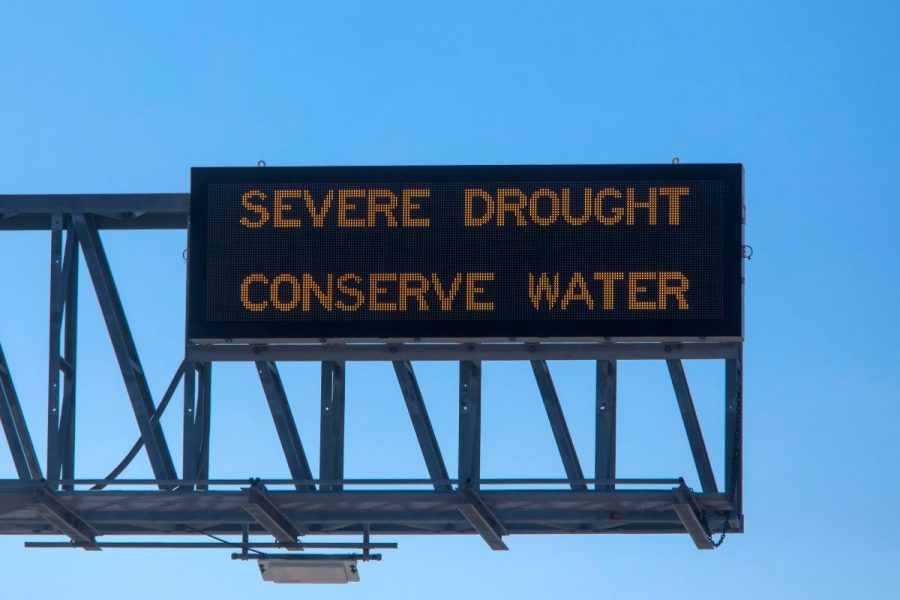A Farmer's Guide to Preparing for Water Scarcity

Water scarcity is increasingly becoming the greatest challenge the United States is facing right now. According to statistics by the US National Integrated Drought Information System (NIDIS), about 37% of the entire country and 44% of the lower 48 states are already in drought. In addition, the United States Drought Monitor (USDM) reports that over 32% of land in western states is in a state of exceptional or extreme drought as of July 2022, and it will only get worse.
Farming is the lifeblood of food security and must go on despite the drought. Therefore, farmers must brace themselves for water scarcity and adopt new farming techniques that use less water without hurting crop and food output.
If you are a farmer in the United States, this five-step guide can help you prepare for water scarcity to minimize its impact on your crop production.
Step 1: Assess Your Water Needs and Supply
The first step when preparing for any significant changes should always be assessing the current situation. First, map out your water sources. How many water sources do you have, and are they easily accessible during periods of water scarcity?
Combined, what is the capacity of your water sources, and how long do you estimate this capacity to last? If there's a deficit between what you have and how much you require, can you find additional water sources in times of drought?
Most importantly, you must also consider the costs of retaining your current water sources and acquiring new ones. Is the cost manageable, or will you have to look for additional sources of financing?
As you explore new water sources within your access, like nearby ponds, springs, rivers, etc., don't forget to consult your local water office or an extension officer in your area. You might not have the rights to use these water sources for agriculture because of limiting rules and regulations.
This step might look simple, but it goes a long way in ensuring you are well-prepared to deal with water scarcity no matter the length of the situation.
2. Create Your Water Conservation Plan
The next step to take when preparing for water scarcity is to create a water conservation plan. This plan guarantees you are using water effectively, reducing water wastage and providing all the water your crops require to thrive.
Your conservation plan will depend on the season when the scarcity happens. You can easily ascertain this through this helpful website, which is a collaboration of the National Oceanic and Atmospheric Administration, the University of Nebraska, and the USDA. The website maps out the country's climate, rainfall, and drought conditions. Data from this website will be a great starting point to understanding which seasons and periods to expect water scarcity.
Once you have this information in order, start creating the conservation plan. The plan defines:
- The end goal, such as the amount of irrigation water you plan to save
- Detailed overview of how you plan to conserve water
- Irrigation schedules
Step 3: Conserve Water Through Optimized Irrigation Scheduling
As water becomes scarce, the smartest thing you can do for your crops is to ration how much and how frequently you water them. Smart water management is critical at this point to avoid over-watering or under-watering your crops.
If you have experience in farming, you will appreciate how irrigation is a precise science. Once you master variables such as the weather, precipitation, and soil and plant moisture, you can devise an irrigation schedule optimized for your vineyard, orchard or farm. The good thing is that plants will adapt to the new schedules and conditions as long as you are consistent.
One of the most important tips you can try is watering the plants at night to minimize the loss of water through evaporation. Proper timing of irrigation schedules will allow water to seep deeper into the soil and replenish the water table for longer.
Step 4: Practice Precision Irrigation
While the future of the global climate seems bleak, technology is rapidly advancing, and the agricultural industry is currently one of the major beneficiaries. As a modern-day farmer, you must consider leveraging technology to deal with the water scarcity problem. The most effective way to do this is to use precision irrigation to save water, reduce farming costs, and improve crop quality and output. As the name hints, precision irrigation is a system of drip or underground irrigation lines that delivers a precise amount of water to a plant.
Some precision irrigation technologies in the market, such as Lumo, use cloud software and advanced data reporting features to eliminate manual calculations and tasks like opening and closing valves. This system provides in-depth insights into water usage, system health, and how much water you conserve over time.
Step 5: Invest in a Smart Irrigation System
Investing in a smart irrigation system is the best way to prepare for water scarcity. A smart irrigation system accomplishes water conservation while reducing your operational costs. It helps growers save water by promoting uniform water distribution, detecting leaks, breaks and clogs and automating irrigations.
Leading smart irrigation systems use flow meters to allow for volume based scheduling and monitoring system health. This means farmers can remotely detect leaks or clogs and reconfigure the system as needed to promote maximum water efficiency.
Finally, smart irrigation systems provide insights into water usage, the capacity of water conserved, and how much the system saves overall.To learn more about how smart irrigation systems help in periods of water scarcity, contact us today or email [email protected].